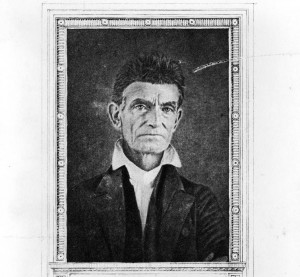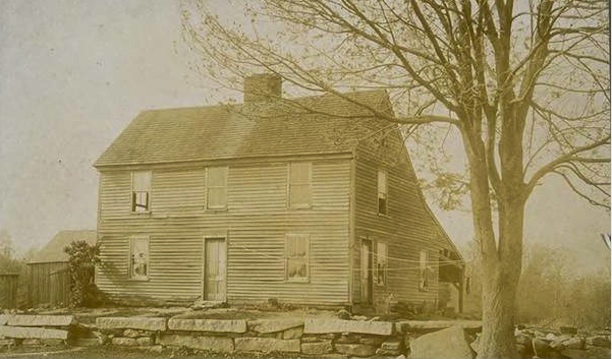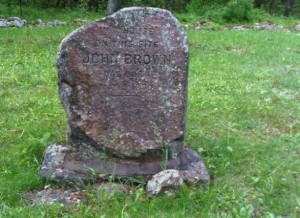by Peter Vermilyea
Ruins are all that remain of the birthplace of one of the transformative figures in American history, John Brown. The house was built in 1785 and was purchased by Brown’s father, Owen Brown, in 1799.
John Brown was named for his grandfather, who died when Owen Brown–one of 11 children–was five years old. With the family in dire financial straits, Owen was sent to live with various relatives and friends; ultimately, Owen Brown was sent to work at a young age. He was trained as a cobbler and worked farming local fields in the summer and making shoes over the winter.
As a teenager he met and married Ruth Mills. Their first child died before turning two. They soon after moved to a saltbox-style home in the rocky countryside of Litchfield County. Here, on May 9th, 1800, John Brown was born. Of the child’s birth, Owen wrote that there was “nothing very uncommon.”

John Brown, ca. 1899 – Library of Congress, Prints and Photographs Division
It doesn’t require too much imagination to speculate that Brown received his military spirit from his namesake grandfather, a Revolutionary War officer. His religious fervor was likely acquired from his maternal grandfather, a preacher. The combination of these traits would set Brown on the path to his raid on Harper’s Ferry.
The Western Reserve
The Browns left the rocky soil of Connecticut for the more fertile fields of Ohio when John was five. The Browns were joined in this migration to Ohio by thousands of other families. Known as Connecticut’s Western Reserve–or even New Connecticut–much of the land of Northeastern Ohio was owned by the Connecticut Land Company. So many Connecticut residents moved to Ohio that the Hartford Courant published an article wondering who would care for the cemeteries of Litchfield County when all the residents had left. The Browns would have been familiar with the names of many of the places in their new home state–nearby were Litchfield and Kent, Ohio. The Browns settled in the small community of Hudson.
Even with the move, success continued to elude the Browns. Owen opened a tannery in Ohio, which prospered for a time. He thrived enough to send John back to Connecticut to be educated–at the Morris Academy in Litchfield. He hoped to be a Congregational minister, but money ran out and he returned to Ohio and the family tannery. There he developed his abolitionist ideals.
The Raid on Harper’s Ferry
John Brown would move frequently in his life and often struggled financially. By the 1850s, his abolitionist ideals became militant and he gained notoriety for his actions in “Bleeding Kansas.” On October 16, 1859, Brown led 18 men in an attack on the federal arsenal and armory in Harper’s Ferry, Virginia (today West Virginia). In Brown’s mind, this was the opening action of a campaign to free the nation’s enslaved people and create an independent slave republic. Two days later, US Marines under the command of Colonel Robert E. Lee stormed the town’s engine house, which Brown had commandeered as a fort. Most of Brown’s men were killed or captured. Brown was wounded in the assault, captured, tried for treason, and convicted. On December 2, 1859, Brown was executed in Charles Town, Virginia (today West Virginia).
His birthplace, meanwhile, was restored in 1901 and opened as a historic house museum, one of the first in Connecticut. In 1918, however, the house was destroyed by fire. Still, the forest has been kept from swallowing up the ruins, and in 1932 a granite monument was erected. In 1997, the site became a part of the Connecticut African American Freedom Trail, and in 2000 the site was acquired by the Torrington Historical Society.
Peter Vermilyea, who teaches history at Housatonic Valley Regional High School in Falls Village, Connecticut, and at Western Connecticut State University, maintains the Hidden in Plain Sight blog and is the author of Hidden History of Litchfield County (History Press, 2014).
Note: ConnecticutHistory.org does not edit content originally published on another platform and therefore does not update any instances of outdated content or language.










